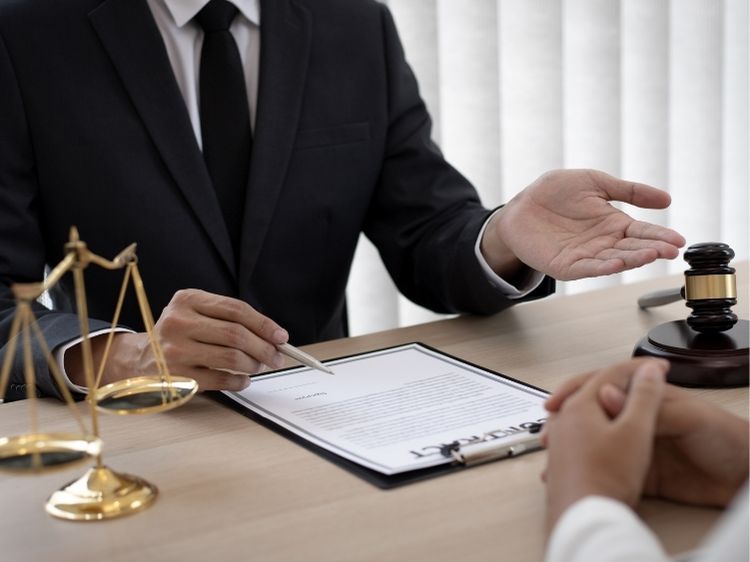Product Liability Is Based on What Law? An In-Depth Look
Product liability is a critical aspect of consumer protection, ensuring that manufacturers, distributors, and retailers are held accountable for the safety of the products they sell. But what exactly is product liability based on? This article dives deep into the legal framework that governs product liability, offering an easy-to-understand guide for anyone interested in understanding the laws that protect consumers.
What Is Product Liability?
Product liability refers to the legal responsibility of any or all parties along the manufacturing chain for damages caused by a product. This can include the manufacturer, the distributor, and even the retailer. But product liability isn’t just about pointing fingers when something goes wrong—it’s about ensuring that products meet certain safety standards to protect consumers from harm.
The Legal Foundations of Product Liability
So, product liability is based on what law? The foundation of product liability law in the United States is rooted in several legal theories: negligence, strict liability, and breach of warranty. Let’s break down these concepts:
Negligence
Negligence is one of the oldest and most fundamental principles in product liability law. In essence, it occurs when a manufacturer fails to exercise reasonable care in the design, production, or labeling of a product, leading to injury or harm.
- Design Defects: If a product is inherently dangerous due to its design, the manufacturer can be held liable if an alternative design could have reduced the risk.
- Manufacturing Defects: Even if a product’s design is sound, errors in the manufacturing process can lead to defects, making the product unsafe.
- Failure to Warn: Manufacturers must provide adequate warnings and instructions to prevent misuse. If they fail to do so, they may be liable for any resulting harm.
Strict Liability
Strict liability is a more consumer-friendly approach, as it doesn’t require the injured party to prove negligence. Under strict liability, a manufacturer or seller can be held liable if a product is defective and causes harm, regardless of whether they were negligent.
- Unreasonably Dangerous Products: The key here is that the product must be “unreasonably dangerous.” This means that the product poses a risk beyond what an ordinary consumer would expect.
Breach of Warranty
When you buy a product, there’s an implicit understanding that it will perform as advertised. This understanding is known as a warranty, and there are two main types: express and implied.
- Express Warranty: This is a specific claim made by the manufacturer about the product, such as “This blender can crush ice.”
- Implied Warranty: Even if there’s no written warranty, the law assumes certain guarantees, such as the product being fit for its intended purpose (known as the “implied warranty of merchantability”).
How Do These Laws Protect Consumers?
Understanding product liability is crucial because it empowers consumers to seek compensation if they are harmed by a defective product. These laws create a safety net, ensuring that manufacturers can’t cut corners without facing consequences.
For instance, let’s say you buy a new car, but the brakes fail due to a design flaw. Under product liability law, you wouldn’t need to prove that the manufacturer was negligent in designing the brakes—only that the brakes were defective and caused your injury. This is the essence of strict liability.
Real-Life Examples of Product Liability Cases
To fully grasp how product liability laws work, it’s helpful to look at some real-world examples:
The Ford Pinto Case
One of the most infamous product liability cases in U.S. history involves the Ford Pinto. In the 1970s, it was discovered that the Pinto’s fuel tank was prone to exploding in rear-end collisions. Despite knowing this, Ford decided not to fix the issue due to cost concerns. When this information came to light, it led to numerous lawsuits and a significant shift in how product liability was viewed in the auto industry.
McDonald’s Hot Coffee Case
Another well-known case is the Liebeck v. McDonald’s Restaurants, often referred to as the “Hot Coffee Case.” In 1992, Stella Liebeck suffered third-degree burns after spilling a cup of McDonald’s coffee in her lap. The coffee was found to be excessively hot, far beyond what was safe for consumption. This case highlighted the importance of proper warnings and the responsibility companies have to ensure their products are safe for use.
The Role of the U.S. Legal System
The U.S. legal system plays a crucial role in product liability. While federal laws provide a baseline, individual states can implement their own product liability laws, leading to variations across the country. The most influential federal laws include:
- The Consumer Product Safety Act (CPSA): Enacted in 1972, the CPSA created the Consumer Product Safety Commission (CPSC), which oversees the safety of consumer products.
- The Uniform Commercial Code (UCC): The UCC, particularly Article 2, governs the sale of goods and includes provisions related to warranties.
- The Restatement of the Law (Third) of Torts: This is a set of principles issued by the American Law Institute that guides courts in tort cases, including product liability.
FAQs About Product Liability
Q: Who can be held liable in a product liability case?
A: Liability can extend to anyone involved in the product’s chain of distribution, including manufacturers, distributors, and retailers.
Q: Do I need to prove negligence to win a product liability case?
A: Not necessarily. Under strict liability, you only need to prove that the product was defective and caused harm.
Q: What damages can I recover in a product liability lawsuit?
A: You may be entitled to compensatory damages (for medical bills, lost wages, etc.) and, in some cases, punitive damages designed to punish the defendant.
Q: Can I sue if I misuse the product?
A: If the misuse was foreseeable and the manufacturer failed to warn against it, you might still have a case.
Q: How long do I have to file a product liability lawsuit?
A: This depends on the statute of limitations in your state, but it typically ranges from 1 to 6 years.
Conclusion
Product liability is based on a complex web of laws designed to protect consumers from defective products. Whether rooted in negligence, strict liability, or breach of warranty, these laws ensure that companies are held accountable when their products cause harm. By understanding the legal principles behind product liability, consumers can better protect their rights and seek justice when necessary.



